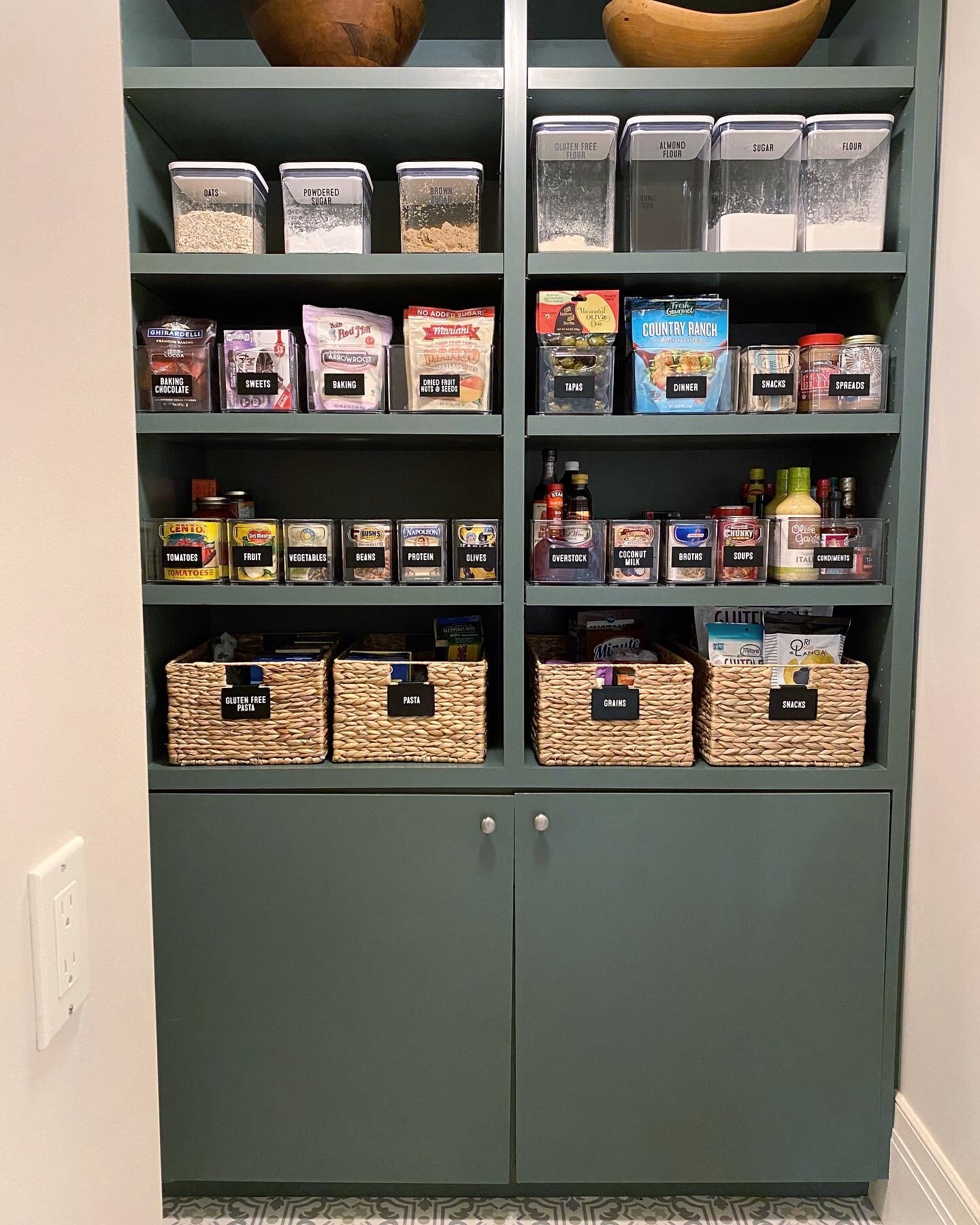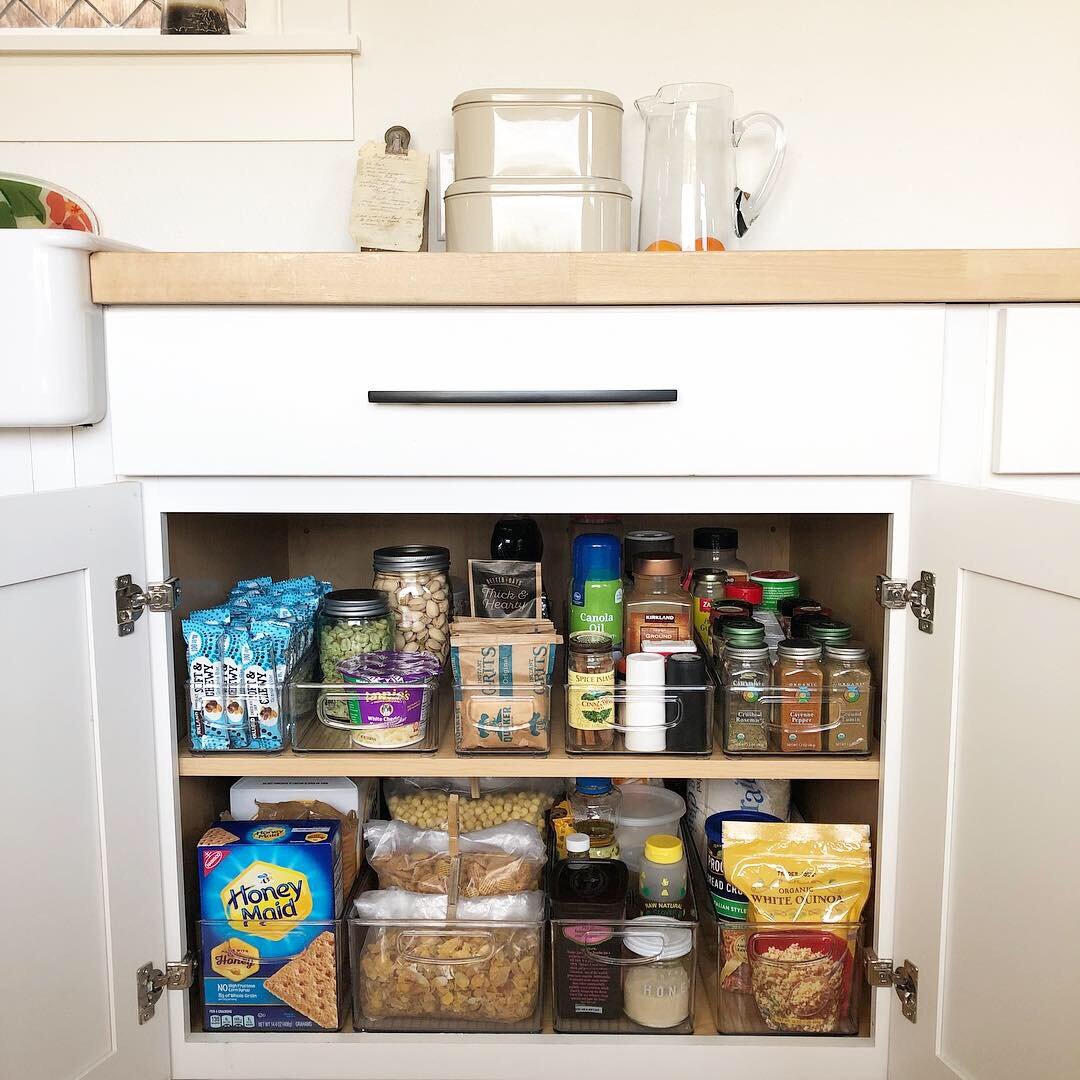Pantry Organization, Our Step-By-Step Guide
We asked our readers what topics they would most like to hear from us on, and pantry organization was definitely one of the top picks! You asked, we listened, and today we are going to walk you through your pantry organization, step-by-step. Trust me, it isn’t as daunting as you might be thinking, especially with our easy to follow guide. (And hey if it is… just give us a call and we will do it for you!)
Before you begin, you’ll want to do take a photo of that space! Everyone loves a before and after, including us, so if you’ve put in the work, you’ll want to be able to compare the after, and even share it on social media with us!
Next, make a few easy decisions. When it comes to pantry organization, the sky is the limit, on looks, functions, budget and containment options. Do you like to see everything? Clear storage might be a good option. Do you like a more visually streamlined space when you open your doors? Water hyacinth baskets might be a good fit. Perhaps you like wood, wire, or a trendy farmhouse look. Or a combination of materials. It might help to visit a store or site like the Container store, to see the variety of choices available to you! (Personally, our team loves all styles of pantry but we especially appreciate a balanced and cohesive look with a twist of texture variety. You’ll often see us incorporate deep drawer bins for canned goods, along with water hyacinth baskets for bagged snacks for a streamlined and functional pantry space.) Once you’ve decided your product budget and preferences, you can begin at the top.
Remove every single item from your pantry and clean the whole thing from the top shelves down to the bottom. (This works best, when your kitchen is tidy and you’ve pre-cleared a nice space for all you pantry items to go.)
As you empty the items, you’ll want to set them into like piles. For example, all your canned fruits should be placed together, snacks together, breakfast items together, etc. Once you’ve emptied your whole pantry out, cleaned those shelves, and you have your similar categories in piles, you can move to the next step.
Go category by category, and check each expiration date. This is am important step so definitely don’t skip it. It will help you determine what is actually coming back into your pantry space, by eliminating things that should be tossed out, recycled or donated. (It can be helpful to keep a food donation box handy, and if you find something that your family isn’t enjoying or you have an abundance of something, it always feels good to share.) Once you have eliminated items that aren’t returning to your space, give your self a pat on the back. That’s a big job and takes quite a while!
With the remaining items sorted, you’ll be better able to gauge the amount of bins, baskets and products needed for this space. (When you hire us, we actually do this part ahead of time and bring those product choices with us. If you’re doing it yourself you might need to make a couple of trips, realistically, to return or get more as needed. It’s a nice goal to finish this entire project in one day though, so try to plan ahead for what you’ll actually need, as best you can.)
Gather your bins and roughly plan out where things should return to, in the pantry. We generally think in terms of what the family needs access to, most. For example, if there are children who are younger but able to get their own breakfast items, you’d want to place those lower down and take into consideration other similar function choices. Canned goods and dinner prep might work better higher up but not too high, and overflow items that aren’t accessed often, such as Costco cereal boxes might work well on a high shelf. If things are being decanted into containers, jars and such, a bin housing “overflow” items works well on the top shelf.
It can be helpful to use a post-it note to create some zones on the front end of this project, as you think food storage through. Place one where canned goods are meant to go, and such. These can be easily moved and tweaked as you go.
Step back often and reassess it, overall. Really look at the whole space to see if it is coming together with the right kind of function for your family. You might need to change things as you go and that’s okay. Even professionals change things mid-stream sometimes!
Begin filling your pantry, utilizing bins and containment. Don’t be afraid to try things in different ways and since there are so many ways to do it right, just focus on what is the best way to do it for how your family operates? Pro-tip; keep like bins together throughout, but add a pop of texture by adding in a different variety of bins at the bottom.
Add labels. Another thing we definitely recommend you don’t skip, as labels provide the structure of a maintainable system. Sure, you might know where all the bags of nuts go, but does your ten year old? Pop a label on that basket and next time he is searching for the peanuts, he knows not only where to find them, but also where to put them back!! (Amen to that, right mamas?) (If you want to really take it up a notch, you can always order some customized vinyl labels from us to give it that professional finish!)
Snap that after photo and share it with our team! (You never know, we might even feature your hard work on social media.)
A few things it may also be helpful to consider, as you jump into this project; Purchase the highest quality bins you’re able to, as you’ll want this system to last a long time, after all that effort. Consider decanting as a way to not only look nice, but also see at a glance what you’re running low on. (This can save considerable time when you’re trying to jot down a grocery list and get out the door.) And finally, beyond decanting, think also in terms of grouping. What I mean by that- compare how much more space boxes of partially-eaten items take up on a shelf, as opposed to a basket or bin filled with folded, clipped bags, that have been removed from the boxes. You can tuck them in one behind the other and pull out the whole bin for breakfast or snacking, so everyone can see what they want. (This system works really well for cereals, snacks in bags, nuts and even baking items.)
You will also want to take into account, the type of pantry you have. For example, if you have pull-out drawers, clear, deep drawer bins make excellent containment for cans, as well as keeping items from spilling over into chaos. If you have narrow shelves, can risers can work well, making good use of vertical space, and if you have corners, turntables can be a high function addition.
Do you have any questions or success stories to share with us when it comes to pantry organization?




